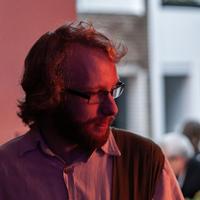Public seminar: Jim Hickson, Juan Carlos Méndez Álvarez, Lorane Prévost (University of Oxford)
Free entry, no registration required
An African One-String Fiddle in an Oxford Museum: The Case of Object 1913.31.103
Abstract
Object 1913.31.103 is a beautiful, highly-ornamented African one-string fiddle, currently on public display in Oxford’s Pitt Rivers Museum. The museum’s labels state that it originated with the Mundang people of Lake Léré, Cameroon, that it was collected by a Mrs Temple in 1910 or 1911 and donated to the museum in 1913. No other information or documentation relating to the fiddle exists.
In this paper, I take this nearly-anonymous fiddle and seek to untangle its layers of potential meaning, many of which are hidden from public view. By recognising the instrument as a single, physical object removed from its original context, and by looking closely at each aspect of construction and material, big questions emerge. Not only can we discover potential biographies of the fiddle itself – its history, its uses, its cultural meanings – but we become able to site it within global flows of musical and material culture with intimate connections to at least three continents. Through the use of archival sources, interviews and hands-on investigation, this paper demonstrates the importance of individual musical instruments as a site of ethnographic research and the impact that such research can have on museum and archival practices in regards to musical instruments.

Biography
Jim Hickson is a third-year DPhil student at the University of Oxford. His thesis focuses on African one-string fiddles in the UK, as they perform and are performed in museums and the capitalist world music ecology. He holds a BA (Hons) in Music and an MMus Ethnomusicology, both from SOAS, University of London. He most recently worked as part of the World and Traditional Music section of the British Library Sound and Vision Archives, and has worked as a freelance music journalist and writer since 2012.
The Sonically Mediated Past in the Cinema of Lucrecia Martel
Abstract
In his book Breathless, Allen Weiss explores the necromantic nature of sound recording, which relieves memory from the task of remembering while granting the dead an agency to stand as “confidants, witnesses, respondents, accusers, avengers, judges” (2002, 20). In Latin American cinema, I find this in the representation of sounding technologies that grant the absent a sonic return as ghosts with words still left unsaid. Simultaneously, ghosts of Latin America’s past leak into the present as sonic stowaways, remnants of evils that have not been truly vanquished.
In this paper, I study the portrayal of sounding technologies in the cinema of Lucrecia Martel and how they mediate a complicated past in which nostalgic remembrance and horror collide. I explore a backgrounded sonic past, like a radio that someone forgot to turn off, building on Daniel Bishop’s notions of backgrounded diegetic music in the creation of an offscreen imagined world (2021). I combine this with the theories of Deborah Martin and Catherine Grant on Martel’s “others”—who frequently remain blurred and out of focus—to argue for an “out-of-focus” mediated sound that complicates the boundaries of past and present (2021). Finally, I analyze scenes in Martel’s filmography as case studies.

Biography
Juan Carlos Méndez Álvarez is a doctoral candidate in music at the University of Oxford. He studied classical and electric guitar performance in Costa Rica and the United States, before graduating from the Research Master’s in Musicology (cum laude) at Utrecht University in the Netherlands. For his master’s thesis titled Hauntologies of Music in Latin American Cinema, he was awarded the Hélène Nolthenius Prize by the Royal Society for Music History of The Netherlands. His current doctoral project is a further exploration of this topic.
Two Models of Transmission: Iranian Classical Music Practices in France and Canada
Abstract
Based on the radif, a modal system gathering hundreds of melodic segments, Iranian classical music developed to encompass a variety of aesthetics, styles, and performances. A comparison between its transmission in France and in Canada suggest that musical manifestations outside Iran are tied to the influence of musicians established in diasporas, as well as to the social structure of the host country. In France, most of the transmission is received by individuals with no Iranian heritage, and discourses advanced by media and public institutions tend to homogenise the discipline. A stress is thus placed on the tradition’s erudite and spiritual aspects, as well as on musical preservation. This results in performances being primarily monophonic, and occurring within museums or as part of academic talks. This constitutes a major contrast with the music’s Canadian transmission: performances and instruction are predominantly organised within the Iranian diaspora, and present a significant aspect of community-making. A variety of styles is moreover observed, with a particular attention given to Iran’s regional expressions. Finally, a willingness to broaden the audience materialises through the incorporation of external musical influences such as polyphony, symphonic instruments, and the creation of musical bridges between neighbouring traditions.

Biography
Lorane Prévost has a background in both anthropology and music performance. Her interest surrounds the interactions between epistemology and music performance and between music, politics and identities in the twentieth/twenty-first centuries. Currently in the third year of her DPhil, her thesis is titled The Transmission Of The Radif Outside Iran: Social And Musical Hierarchies.



